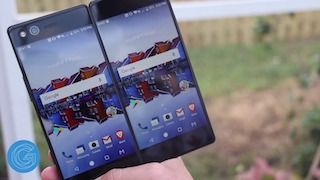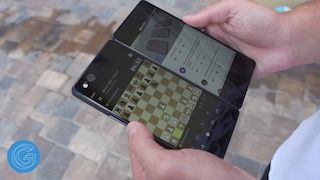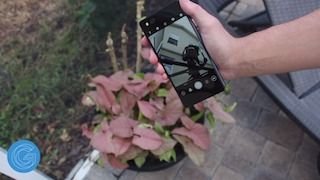ZTE Axon M Review - A Phone With TWO SCREENS?
Unique smart phones will always manage to catch our eyes for their quirky features or groundbreaking designs. Apple’s original iPhone in 2007 paved the way for the smartphone market we have today, and Samsung’s original Galaxy Note from six years back has resulted in a large increase in phone sizes. Today we have the ZTE Azon M. It’s the first dual-screen phone we’ve seen to date, and it has quite a bit to offer. Will having a dual-screen phone improve your productivity? Is ZTE’s software up to snuff? Is the Axon M worth it? All this and more, is coming right up.
Starting things off with pricing and availability, the Axon M is an AT&T exclusive and will cost you $24.17 per month or $725 off contract. It’s offered in the one variation seen here with 64GBs of storage. The design of the ZTE Axon M is the first we’ve seen of its kind. It has a screen on the front and back of the device and to open up the second display you simply fold it open like this.
.jpg)
These two displays are each 5.2 inches, 1080p, and they look pretty good. The displays are not as good as the Google Pixel 2’s, which I just reviewed, but they’re decent looking. One problem I ran into with the design was that no matter how you hold the phone, you manage to smudge up the second display, which can be a bit annoying when you do decide to use it. One great feature with the foldable screen construction is that the second display can also serve as a method to prop up the first display. With this configuration we can mirror display one’s content to display two and allow people to simultaneously to consume the same content.
.jpg)
For having the first try at releasing a dual-screen phone, I think ZTE has done very well with the design. The build quality is solid and tough with a metal frame, and the positioning of the power button, volume rockers, and programmable button is surprisingly intuitive. The power button also works perfectly as a fingerprint sensor, and the button is slightly sunken into the body to differentiate itself between the other two. The programmable button, by default is set to open tv mode and use the phone as a remote control, but it can also be changed to open up the camera or other applications. On the top of the Axon M you’ll find the headphone jack, and on the bottom of the device is the usb c charging port and speakers, which are loud and clear for consuming content. One other plus with the Axon M is the micro-sd card slot which supports micro-sd cards up to 256GBs.
.jpg)
The design of a dual-screen phone can be impeccable, and poor software can render the incredible hardware useless. ZTE’s software multitasking is decent. You can use the multitasking button on the bottom right of the screen to access mirror mode - which mirrors display one onto display two, dual screen mode - which runs two separate applications on each screen, and extended mode - which enlarges the application from only display one to both panels.
As far as practicality goes, I found the dual screen mode most applicable for day to day usage. As someone who’s a big fan of the split screen multitasking mode on android, I found it useful to be able to watch a youtube video on one screen and read the latest news on the other. The software often works well, but I did notice that after closing the second screen during dual screen mode, the first screen would lag a bit. Clearly this phone is the first of its kind, and some bugs are to be expected, but I do think it’s worth pointing out these hiccups. Overall, the software is effective and useable in its current form, but ZTE still has some wrinkles it needs to iron out.
On paper, the Axon M does not compare with the Galaxy S8 or other top phones of 2017, but its Snapdragon 821 processor and Adreno 530 GPU are still effective at powering the device for day to day usage and gaming.
.jpg)
One quirk with the Axon M is that there’s only one camera on the front of the device. This means you’ll have to unlock the device, change the camera view, and flip the phone around to take a picture. It’s not a big deal the majority of times when pictures are staged, but when every second counts during those quick picture moments, the Axon M may be too slow. As far as actual picture quality goes, selfies are impressive due to the 20 megapixel shooter, and shots turn out great in good lighting, but the blur would look off in low lighting conditions.
The Axon M has a 3,180mAh battery will yield around five hours of on screen time per charge, which is impressive. Just keep in mind that using two screens at the same time will certainly help drain your battery.
Is the ZTE Axon M worth it? For a business man looking to up his productivity on the go using excel on one screen and his browser on the other, I can certainly see the advantage. However, for most of the population, I don’t see the dual screen adding much functionality to their lives. Moving forward, dual screens could make an impact in the smartphone market, or it could fade away like flexible phones did for LG. Let me know what you all think about the ZTE Axon M in the comments section down below.
Check out this article on how to save $500+ on your smartphone plan.
~ Follow @GadgetGuruHD for the latest technology news and reviews.